Male Breast Augmentation in Singapore
Search and Compare the Best Clinics and Doctors at the Lowest Prices for Male Breast Augmentation in Singapore
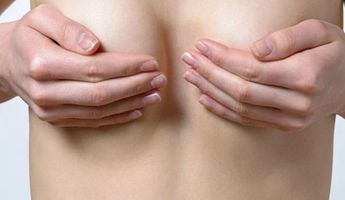
Find the best clinics for Male Breast Augmentation in Singapore
No pricing info available
Turkey offers the best prices Worldwide
Price: $ 2
From 1 verified reviews
Su Anh, 17 November 2019
I had great massage here after my surgery, very recomend this
- Home
- Singapore
Compare Before & After Photos of _procedure_photos.phpMale Breast Augmentation
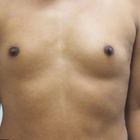
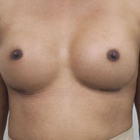
Front view
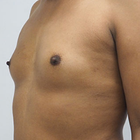
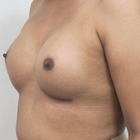
Front view


Front view
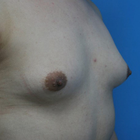
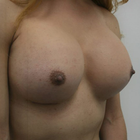
Half-side view
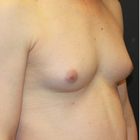
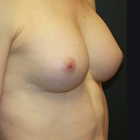
Half-side view
WHY US?
At Medijump, we're making medical easy. You can search, compare, discuss, and book your medical all in one place. We open the door to the best medical providers worldwide, saving you time and energy along the way, and it's all for FREE, no hidden fees, and no price markups guaranteed. So what are you waiting for?

Free

Best Price

Widest Selection

Risk-Free
What you need to know about Male Breast Augmentation in Singapore
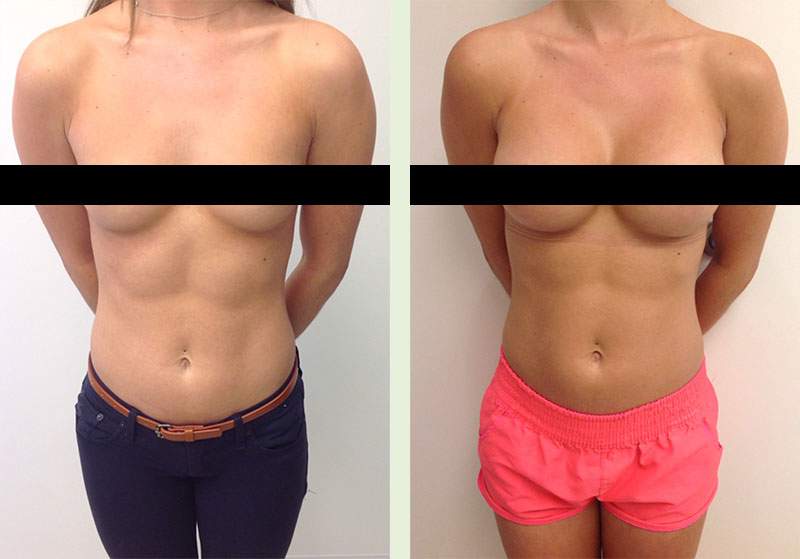
Male breast augmentation is a cosmetic procedure to enlarge the male’s breasts by inserting a breast implant. It is usually done on a male to female surgery to give patients contoured feminine breasts.
The procedure is also done to enhance the pectoral muscles on men whose chests do not seem to respond to exercise or men with Poland’s syndrome. The intervention is often preferred by individuals who wish for a chest that looks more chiseled and symbolizes masculinity. The usual method entails placing implants beneath the pectoral muscles.
What is the cost of Male Breast Augmentation in Singapore?
The expense associated with Male Breast Augmentation within Singapore fluctuates based on several variables such as the surgeon's level of skill, the intricacy of the operation, the kind of implants employed, and the physical location of the clinic. Therefore, it’s essential to converse in-depth with your medical provider to comprehensively comprehend the total expenditure related to the procedure.
Insurance plans generally don't cover Male Breast Augmentation; however, some medical facilities provide patient-friendly finance choices. It's vital to assess the pros and cons in correlation with your personal financial health strategies and determine how it aligns with your budget. Investing in your self-perception and physical appearance can potentially provide invaluable long-term benefits.
What Does the Procedure Involve?
Male breast augmentation is carried out under general anesthetic. Your surgeon starts by making an incision in an inconspicuous area, usually under the breast along the natural skin fold, to make sure the scar is unnoticeable. Then, they place the implant either under the chest muscles or behind the breast tissue. The implants can be made from silicone gel or saline, and the size is adjusted based on your preferences.
How Long Should I Stay in Singapore for a Male Breast Augmentation Procedure?
The length of your stay in Singapore after a Male Breast Augmentation is subject to certain variables. Generally, individuals are cautioned to remain in the vicinity for around a week or two following the surgery. This time frame accommodates the preliminary healing stage and facilitates the management of any immediate complications post-procedure.
In this time, your doctor will keep track of your recuperation process via planned follow-up visits. These check-ups serve as a vehicle to monitor the healing process, extract stitches, and check for any signs of infection or inherited issues. Adherence to this schedule of revisits is of utmost importance.
However, it is crucial to remember that everyone's healing experience is individual. Aspects such as age, overall physical wellness, and the degree of observance to the instructions given after the procedure can sway your recovery. Some people might necessitate an extended stay in Singapore, particularly if they encounter any complications or if their recovery pace is slower than anticipated. Therefore, it's imperative to have a conversation about this with your surgeon, who can furnish a more precise timeline based on your particular circumstance, promoting a secure and effective recuperation.
What's the Recovery Time for Male Breast Augmentation Procedures in Singapore?
You may feel uncomfortable for the first few days and your doctor will give you pain medication to manage the discomfort, so you may need to rest as much as possible during this period. The recovery period until you can go back to your normal routine (including intense exercise) may take about 4 to 6 weeks, but you should be able to return to work within 1 or 2 weeks.
Following the operation, it's fairly common for patients to feel some discomfort, along with swelling and bruising. These are standard postoperative signs that will slowly fade with time. Medical practitioners commonly prescribe pharmaceutical drugs to manage pain and to reduce bruising during this timeframe. Regular doctor visits for postoperative reviews are suggested to keep track of the healing process and promptly deal with any arising complications.
Furthermore, it's advised to avoid demanding activities such as heavy weight lifting and intense exercises for a minimum of four to six weeks after the treatment. This precaution ensures optimal healing of the chest area and minimizes the probability of post-surgical complications. Always remember, healing requires time and patience. Although resuming daily activities is important, giving your body the required time to fully recuperate from the operation is equally crucial.
What sort of Aftercare is Required for Male Breast Augmentation Procedures in Singapore?
It is important to follow your surgeon’s post-operative instruction to avoid any complications and to make sure that the wounds will heal properly. Your surgeon’s instruction may include restrictions, diet, exercise, and wound care. Since some implants need to be replaced after about 10 years, make sure you attend regular checkups with your local doctor.
Keeping regular check-ins with your medical professional is essential to keep track of your recovery journey, modify your post-treatment care if required, and tackle any arising issues swiftly. The post-treatment regimen also consists of particular instructions related to physical movement and workout. Mild physical exercise might be recommended for better blood flow, but demanding activity or chest-focused exercises are generally not permitted for a specific amount of time.
What's the Success Rate of Male Breast Augmentation Procedures in Singapore?
In general, the success rate of male breast augmentation is similar to female breast augmentation, which is around 90% to 98%. This is notably high.
The advancements in medical surgery technology, coupled with the proficiency of the medical experts, generally result in a noticeable enhancement in the physical aesthetics and self-assurance of the majority of males who opt for this procedure. Furthermore, due to the refined chest shape and muscle outline achieved, patients have reported a significant level of satisfaction.
However, akin to other medical interventions, the effectiveness of a Male Breast Augmentation is largely influenced by personal variables. These could comprise the overall wellbeing of the patient, the way their body reacts to the surgery, the surgeon's skill, and compliance with guidelines for care post-surgery.
Are there Alternatives to Male Breast Augmentation Procedures in Singapore?
Surely, other choices exist for Male Breast Augmentation techniques in Singapore. One such approach entails embarking on natural chest enhancement. This involves a regimen of chest workouts and a nutritional program aimed at boosting the bulk and power of the pectoral muscles. Though this pathway may be more time-consuming, it could provide a gradual, naturally appearing augmentation in chest size without the price tag and potential hazards tied to surgery.
Hormonal therapies present another viable alternative, particularly for transgender men. These therapies seek to encourage the formation of male secondary sexual traits, such as an uptick in muscle mass, body hair, and a more profound voice. However, it's crucial to consult a medical practitioner before beginning these therapies due to the potential side effects.
Lastly, some men might select a non-surgical technique like the injection of fillers or fat transfer to enhance the contour and fullness of the chest. However, these procedures yield temporary outcomes and may necessitate repeat procedures. It is advisable to consult with your surgeon about these alternatives.
What Should You Expect Before and After the Procedure
Before undergoing the Male Breast Augmentation, your healthcare professional will assess your medical history, carry out physical assessments, and converse about your cosmetic objectives to evaluate if you're fit for the procedure. Various diagnostic examinations may be necessary to ascertain your general health condition. Your surgical specialist will provide information about the impending procedure, discuss anticipated risks, and outline the probable result. Those who smoke will receive advice to stop several weeks prior to the procedure as nicotine may obstruct the healing process. Additionally, you might be instructed to adhere to specific dietary guidelines and discontinue certain medications.
Soon after the Male Breast Augmentation, it's common to experience some discomfort, inflammation, and bruising in the chest region. This usually decreases steadily over time. Over-the-counter drugs can be used to alleviate the discomfort. Typically, the use of a supportive compression garment is suggested to reduce swelling and aid the new chest shape during the recovery phase.
What are the Potential Risks of Male Breast Augmentation?
Although most patients are happy with the outcome of the surgery, it is important to be well-informed about the side effects and risks before you decide to have it, which are:
- Bleeding and infection
- Seroma
- Hematoma
- Asymmetry and dissatisfaction
- Implant shifting or displacement
- Numbness of the upper arm
- Unfavorable scarring
- Allergic reaction to the anesthesia.
Whilst the information presented here has been accurately sourced and verified by a medical professional for its accuracy, it is still advised to consult with your doctor before pursuing a medical treatment at one of the listed medical providers
No Time?
Tell us what you're looking for and we'll reachout to the top clinics all at once
Enquire Now

Popular Procedures in Singapore
Price on Request

Prices Start From $692

Prices Start From $556

Prices Start From $2,473

Recommended Medical Centers in Singapore for Male Breast Augmentation

- Interpreter services
- Translation service
- Religious facilities
- Medical records transfer
- Medical travel insurance
- Health insurance coordination
- TV in the room
- Safe in the room
- Phone in the room
- Private rooms for patients available

- Interpreter services
- Translation service
- Religious facilities
- Medical records transfer
- Medical travel insurance
- Health insurance coordination
- TV in the room
- Safe in the room
- Phone in the room
- Private rooms for patients available

- Interpreter services
- Translation service
- Religious facilities
- Medical records transfer
- Medical travel insurance
- Health insurance coordination
- TV in the room
- Safe in the room
- Phone in the room
- Private rooms for patients available

- Interpreter services
- Translation service
- Religious facilities
- Medical records transfer
- Medical travel insurance
- Health insurance coordination
- TV in the room
- Safe in the room
- Phone in the room
- Private rooms for patients available

- Interpreter services
- Translation service
- Religious facilities
- Medical records transfer
- Medical travel insurance
- Health insurance coordination
- TV in the room
- Safe in the room
- Phone in the room
- Private rooms for patients available

- Interpreter services
- Translation service
- Religious facilities
- Medical records transfer
- Medical travel insurance
- Health insurance coordination
- TV in the room
- Safe in the room
- Phone in the room
- Private rooms for patients available

- Interpreter services
- Translation service
- Religious facilities
- Medical records transfer
- Medical travel insurance
- Health insurance coordination
- TV in the room
- Safe in the room
- Phone in the room
- Private rooms for patients available

- Interpreter services
- Translation service
- Religious facilities
- Medical records transfer
- Medical travel insurance
- Health insurance coordination
- TV in the room
- Safe in the room
- Phone in the room
- Private rooms for patients available

- Interpreter services
- Translation service
- Religious facilities
- Medical records transfer
- Medical travel insurance
- Health insurance coordination
- TV in the room
- Safe in the room
- Phone in the room
- Private rooms for patients available

- Interpreter services
- Translation service
- Religious facilities
- Medical records transfer
- Medical travel insurance
- Health insurance coordination
- TV in the room
- Safe in the room
- Phone in the room
- Private rooms for patients available
Male Breast Augmentation in and around Singapore
About Singapore
Singapore is a small, yet beautiful island city-state in South East Asia. The country's growth and prosperity in terms of infrastructure and economy are astounding and Singapore is affluent and tax-friendly and its GDP is on par with developed European nations.
Singapore is a global center for education, technology, tourism, trade, logistics, and healthcare. Medical expenses in Singapore are expensive when compared to Thailand and India. Yet, the country attracts medical tourists with its cleanliness, world-class medical infrastructure, and facilities. A C-section will cost anywhere between $6,048 and $11,267 in Singapore. Hip replacements can cost around $8,550-$12,850 and breast lump removal will cost you $5,459-$10,700 including a private room.
The country has 15 JCI accredited hospitals and medical centers, which offer a variety of services from orthopedics, dermatology, dental, cardiology, ophthalmology, and cosmetic procedures to alternative therapies such as acupuncture and Ayurveda. English-speaking medical professionals are extremely skilled and experienced. The hospitals in Singapore have access to cutting edge technologies and it is the best country to treat life-threatening, complex conditions.
It is advisable for medical tourists to have an International Health Insurance Plan to cover surgical costs. Most of the reputed hospitals in Singapore will only admit foreign patients with health insurance.
Medical care in Singapore is not just about getting preventive care and treatments for medical conditions that one may have. Some of the health care centers in Singapore are super luxurious and you can even order your food and shop using wireless tablets provided and make use of the nearby spas. Popular Hospitals and Clinics are the Farrer Park Hospital, Gleneagles Hospital Singapore, Mount Elizabeth Hospital, Parkway East Hospital, and Thomson Medical Centre.
Popular parts of Singapore
Singapore is home to over 5.5 million people and its cultural diversity is displayed in the extensive ethnic cuisine and major festivals. Singapore ranks number ten in the world for skyscrapers.
- Sentosa: Each of Sentosa’s three beaches: Siloso, Palawan, and Tanjong—hold their own unique charms. Palawan beach’s islets and playgrounds are great spaces for families to unwind. Resorts World Sentosa is home to several amazing experiences. Take a movie-themed ride at Universal Studios Singapore, or immerse yourself in aquatic adventures at the S.E.A. Aquarium.
- Marina Bay: If you wish to explore the extravagant side of Singapore, visit the stunning, Marina Bay. The Nightlife is amazing with glittering lights, glitzy rooftop bars, and restaurants. Marina Bay is the central and the busiest district of Singapore.
- Chinatown: You can experience an impressive blend of traditional and modern Singapore in Chinatown. There are ornate Chinese, Buddhist and Hindu temples, museums and plenty of opportunities to soak up the busy streets which are full of old shophouses. It is the perfect location for traditional cuisine and you will be spoilt for choice.
- Orchard: The 2 km long Orchard Road is a shopper’s paradise as you will find large shopping malls and designer’s stores. Singapore’s only UNESCO World Heritage site, the Botanical Garden lies at the corner of Orchard Road.
- Joo Chiat: This neighborhood is more residential and you will find an amazing range of housing options.
- Little India: is the center of the Indian community within Singapore and is filled with multicolored shop-houses that line the streets, and various mosques and temples, and enjoy the aromas that infuse the night air when the demand for food is at its peak.
Weather and Climate in Singapore
Singapore lies close to the equator in the Southern Hemisphere. The island country has a tropical climate. It is hot and humid throughout the year which has led to a steady inflow of tourists all year round.
Singapore receives an annual rainfall of 2430 mm. An average of 167 days receives moderate to heavy rainfall. Two different monsoons: Northeast (December to March) and Southwest monsoon (May to September) accounts for the rainfall. Thunderstorms are quite common during the Southwest monsoon.
The average temperature is 31°C during the day. It is most likely that the temperature can drop to 19°C during the hours of darkness.
Getting around in Singapore
Rated as the world's best airport by Skytrax, Singapore Changi Airport is one of the busiest airports in the World. The airport serves around 100 airlines, flying to 400 cities across 100 countries. You can hire a taxi or use the MRT to reach downtown Singapore.
The transport system is efficient due to the systematic and comprehensive network of roadways. The Land Transport Authority controls private vehicles and minimizes traffic congestion. Some of the common forms of transportation are:
- Mass Rapid Transit (MRT): The MRT has a total of five lines. You can buy a Singapore Tourist Pass or EZ Link card which allows you to use the railways any number of times for two or three days. A single journey costs 0.58 USD and a train arrives every 2-3 minutes during the peak hours.
- Public buses: There are over 300 public buses to serve the locals and tourists and bus fares range from 0.58 USD to 2.07 USD.
- Taxis: are widespread in Singapore and are less expensive and metered. It can cost you 2.63 USD per km.
- Water taxis: Will take you across the beautiful River Singapore. You can visit a few tourist spots via water taxis and view the downtown from a different angle. A single journey will cost 5 USD.
Tourist Visa in Singapore
Citizens of India, China and Russia require a valid tourist visa to enter the territory of Singapore. The visa processing time is just 5 days and it is valid for 90 days from the date of issue. You are allowed to stay here for a maximum of 30 days.
People from the European Union, US, Norway, South Korea, Australia, and New Zealand can enter and stay for 90 days in Singapore visa-free.
Additional Information
- Singapore dollar (S$) is the official currency of Singapore. 1 USD is equivalent to 1.36 Singapore dollars.
- You can find ATMs close to banks, shopping malls and almost every tourist location. You can also pay by using credit and debit cards.
- Malay is the national language of Singapore. Mandarin, English, Malay, and Tamil are the four other official languages of the country. So, almost all the locals are fluent in English.
- Singapore is home to 10 religions. 33% of the total population practice Buddhism, followed by Christianity and Islam.
- New Year's Eve, Chinese New Year, Labour’s day, Good Friday, Deepavali, Vesak day, Hari Raya Puasa and Christmas are some of the public holidays in Singapore.
Popular Searches
- Plastic Surgery in Thailand
- Dental Implants in Thailand
- Hair Transplant in Thailand
- Breast Augmentation Thailand
- Gastric Sleeve in Thailand
- Gender Reassignment Surgery in Thailand
- Laser Hair Removal in Bangkok
- Botox in Bangkok
- Dermatology in Bangkok
- Breast Augmentation in Bangkok
- Coolsculpting in Bangkok
- Veneers in Turkey
- Hair Transplant in Turkey
- Rhinoplasty in Turkey
- Stem Cell Therapy in Mexico
- Rhinoplasty in Mexico
- Liposuction in Mexico
- Coolsculpting in Tijuana
- Rhinoplasty in Korea
- Scar Removal in Korea
- Gastric Sleeve in Turkey
- Bone Marrow Transplant in India
- Invisalign in Malaysia
- Plastic Surgery in the Dominican Republic
- Tummy Tuck in the Dominican Republic
- Plastic and Cosmetic Surgery in Poland
- Rhinoplasty in Poland
- Hair Implant in Poland
- Dental Implants in Poland
- IVF in Turkey
